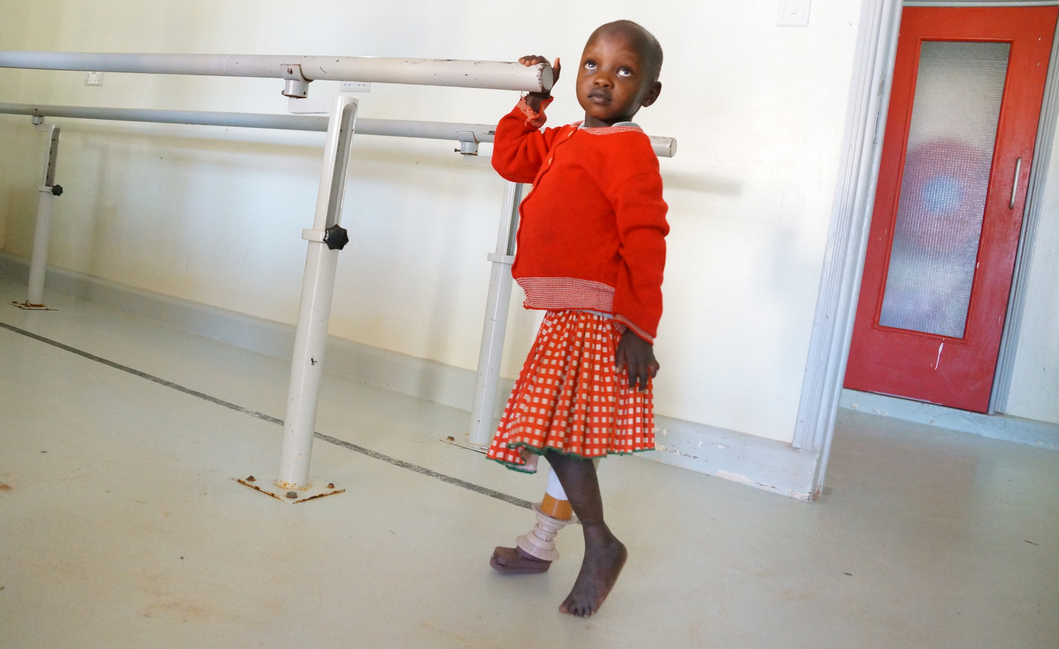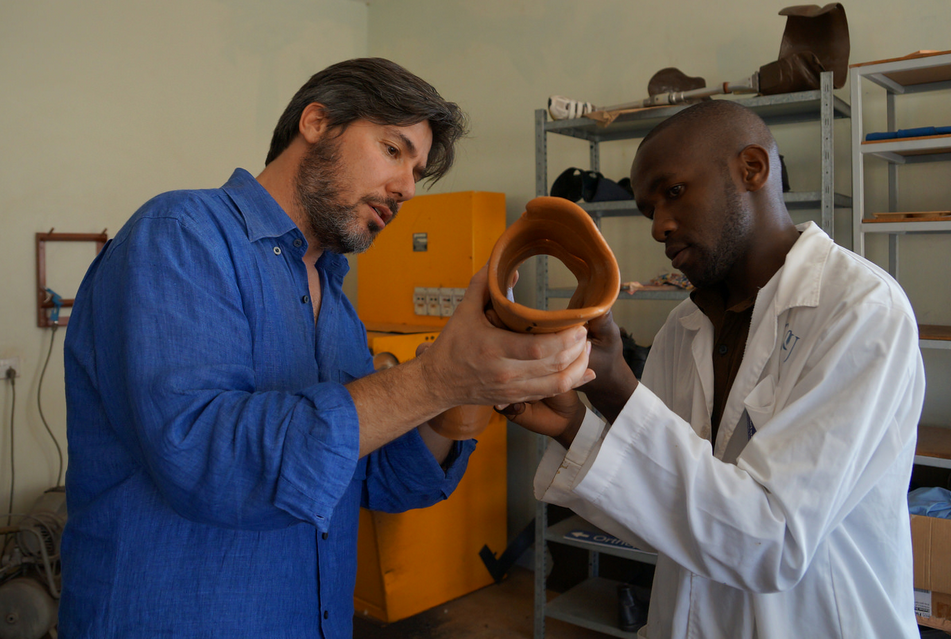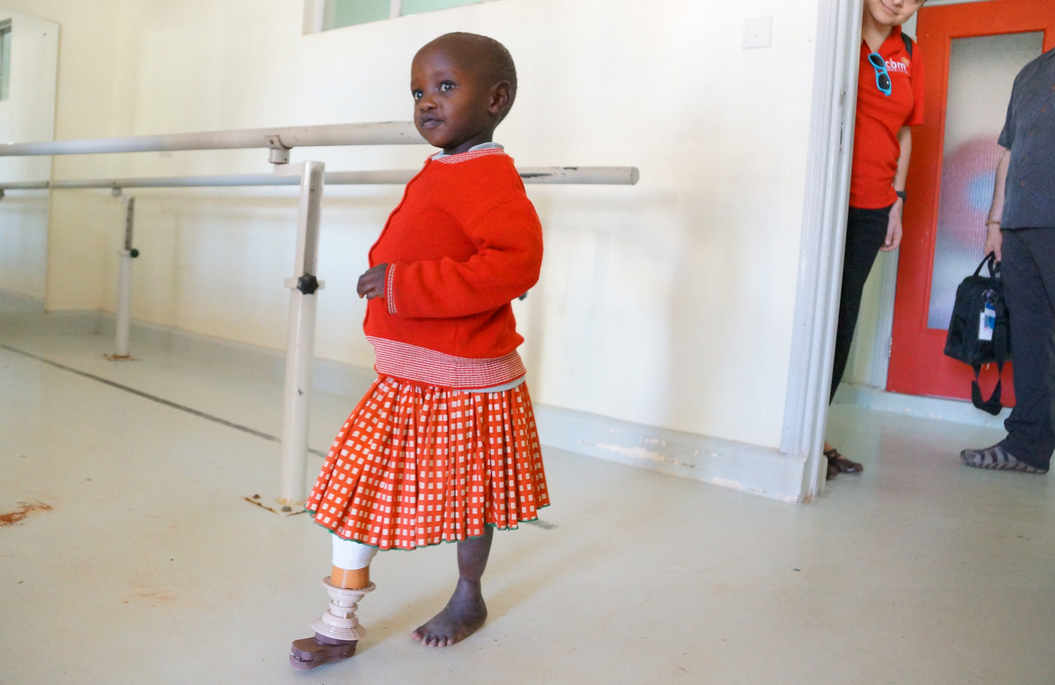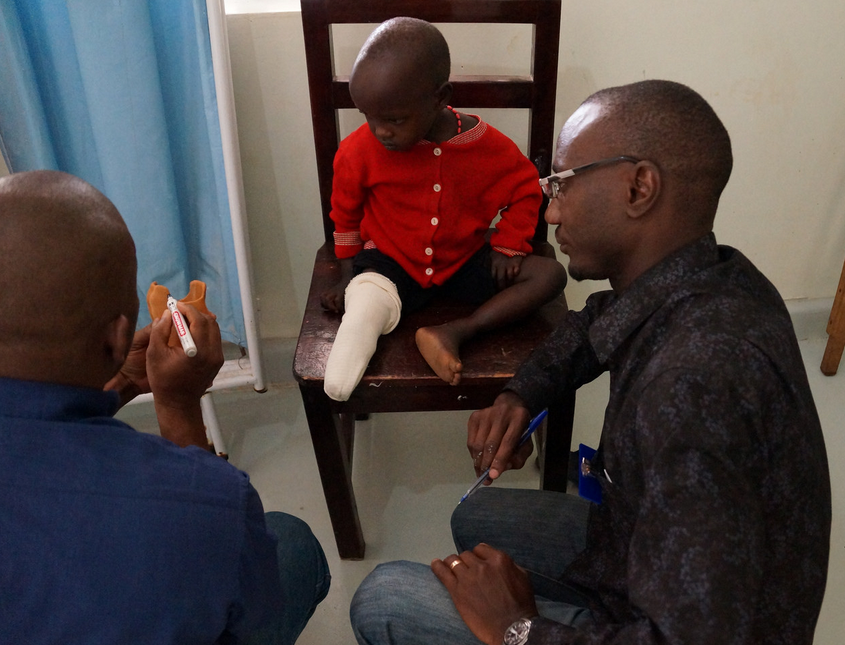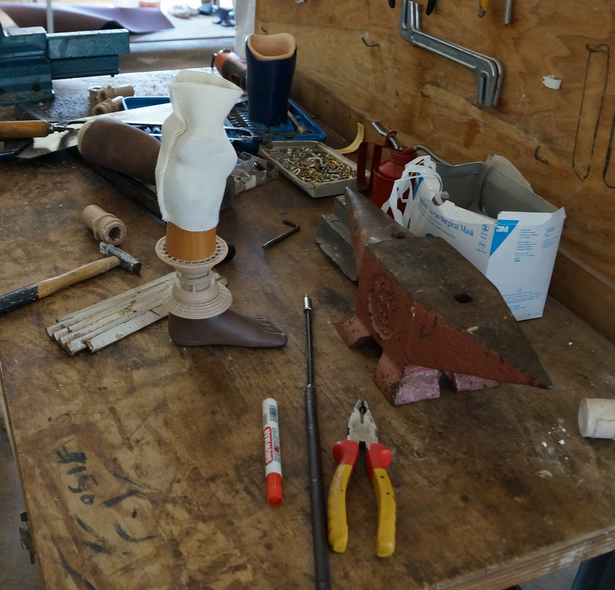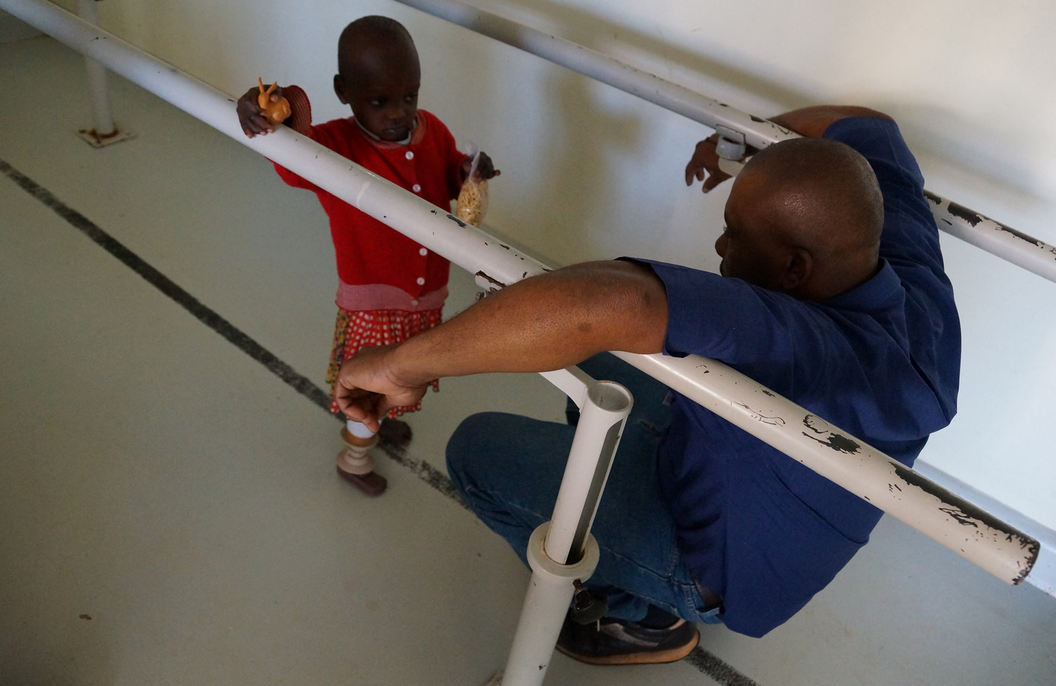3D printing has been a godsend when it comes to the creation of prosthetic limbs. Over the past 2-3 years, we’ve seen tremendous advancements in the production of affordable, high quality prosthetic hands and arms, thanks in a large part to an organization called e-NABLE. Over the last year or so, we have also begun to see 3D printing used in the production of prosthetic legs. The creation process used for 3D printed lower limbs is a bit different than that of the more talked about arms and hands.
Back in December, we reported on a story where members of the Critical Making Lab at the University of Toronto were formulating plans to bring 3D printed lower-limb prostheses to children in Uganda. At the time, a PhD student named ginger coons had been working with Associate Professor Matt Ratto to get their system of creating these prosthetic legs just right.
That was over two months ago, and the way things are advancing within the world of 3D printing, that’s a lot of time!
“We have made a lot of progress since then,” Matt Ratto, Director of University of Toronto’s Critical Making Lab, tells 3DPrint.com. “Specifically, we have worked with CoRSU hospital, Autodesk, and CBM Canada to develop a 3D scanning, design, and printing toolchain so that orthopaedic technologists and technicians in the developing world can produce 3D printed prosthetics themselves. Our tool chain has been piloted at CoRSU in January 2015 and four prosthetics were made and fitted during that time period.”
Ratto is leading a team of 10 members from the University of Toronto and the Christian Blind Mission (CBM Canada) in creating 3D printed sockets for individuals in Uganda. They have successfully trained five orthopedic technicians to create custom sockets on an individual basis. Previously it would take weeks to create a socket, using traditional methods. This perhaps soon-to-be-outdated method involved wrapping an amputated limb with a plaster mold in order to create a “negative cast.” This would then be filled with plaster to create a more useful “positive cast” which can be used as a replica of the limb. A mold for the prosthesis is then created using this cast, and oftentimes many adjustments are required before a final product is available to the patient. Now with 3D printing, it can be done in a matter of hours.
“Many children have lost limbs due to severe bone infections, polio, injury and violent conflict. Thousands of them are going without prostheses they need because there aren’t enough orthopedic technicians to make and fit the prostheses,” said Mitch Wilkie, director of international programs at CBM and leader of the project team.
One of these patients was a 3-year-old little girl named Rosaline Cheptoo, who was born missing most of her right leg. In order to get around, she needed to be carried. Her older brother, Sailas Akodumoi, didn’t even know what to make of his little sister. In fact, he thought that she had been bewitched.
Fortunately for Rosaline, she was discovered by the Comprehensive Rehabilitation Services in Uganda (CoRSU), who provided her with the treatment that she needed and ultimately helped connect her with Matt Ratto and the project being undertaken by the University of Toronto.
“We first came to CoRSU in May 2013 and the orthopedic surgeons told me that she had a sharp protruding [bone] which needed to be operated to reshape it. We occasionally came back for checkup and on December 18, she was given a prosthetic leg. She can now play with others and I hope to take her to school this year,” Akodumoi told The Observer.
In fact, Rosaline was actually the first child to receive one of these 3D printed prosthetic limbs. Ratto and his team don’t utilize any expensive software or equipment to create them, either. Actually most of the technology used is already available to many people around the world.
“First the person’s residual limb is scanned using an inexpensive 3D scanner,” Ratto tells us. “The scan is brought into our SocketMixer software which works with Autodesk Meshmixer (both available for free) to help the technician create a custom 3D socket. This socket is then printed on a MakerBot Z18 and affixed to a polypropylene pylon and foot provided by the Red Cross. A soft liner is produced for the socket using heat-treated EVA foam. The results are then fitted onto the patient and any changes are made.”
Simple right? Okay, maybe not just any person off the street could do it, but for the right technicians with the right training, it really is a lot simpler than the more traditional methods of fabrication.
Rosaline’s isn’t the only miraculous story that stems from this team of volunteers’ incredible work ethic and technology. A 20-year-old woman named Ruth Nakaye also has been a beneficiary of this project. Ruth lost her leg when she was just 8 years old, after being born with a disability. She has had access to prosthetic legs throughout her life, and it has even allowed her to play sports such as soccer.
In Uganda, however, it is difficult to find trained professionals to help create prosthetic limbs, as there are only 200 trained prosthetists in the country, with over 5,000 patients for each prosthetist awaiting new limbs. On top of this, over the course of one’s lifetime, a patient may require up to 20 new limbs. This causes a problem where demand far exceeds supply. 3D printing, however, may be the solution. The team from the University of Toronto plans to help train more people to use 3D printing technology in order to bring prostheses to more people like Ruth and Rosaline in the future.
This initiative could have huge potential not only in Uganda, but in other developing countries where medical technology still remains outdated. It should be interesting to see how this progresses in the coming months and years ahead.
In the mean time, if you would like to help out with this cause, you can donate toward it by visiting the CBM website here.
What do you think about this initiative? Discuss in the 3D Printing Prosthetic legs in Uganda forum thread on 3DPB.com. Check out the video where Matt Ratto explains what this group is doing, as well as some more photos he provided us with below.
[Source: Matt Ratto | University of Toronto | theObserver | BBC News]Subscribe to Our Email Newsletter
Stay up-to-date on all the latest news from the 3D printing industry and receive information and offers from third party vendors.
You May Also Like
IperionX Inks 10-Year Deal with Wisconsin Manufacturer for 80 Metric Tons of Titanium Per Year
IperionX, the Charlotte-based supplier of sustainable titanium powders used for additive manufacturing (AM) and metal injection molding (MIM), has signed a ten-year deal with United Stars, a group of industrial...
Gastronology Launches Industrial Production of 3D Printed Food for Dysphagia Patients
Food 3D printing has, in many ways, been an additive manufacturing (AM) segment looking for the right business case. While some applications are beautiful and others may or may not...
Lockheed Martin Leads $3M Investment in Q5D’s Electronics 3D Printing System
Q5D, an original equipment manufacturer (OEM) of robotic arm, hybrid additive manufacturing (AM) systems used for wire harness production, has closed a $3 million investment round. The investment arm of...
3D Printing News Briefs, April 6, 2024: Depowdering, Cybertruck Door Handles, & More
In today’s 3D Printing News Briefs, ioTech’s digital manufacturing CLAD technology is opening up opportunities for microelectronics and additive manufacturing. Hexagon and Raytheon Technologies commercially released the Simufact Additive Process...


